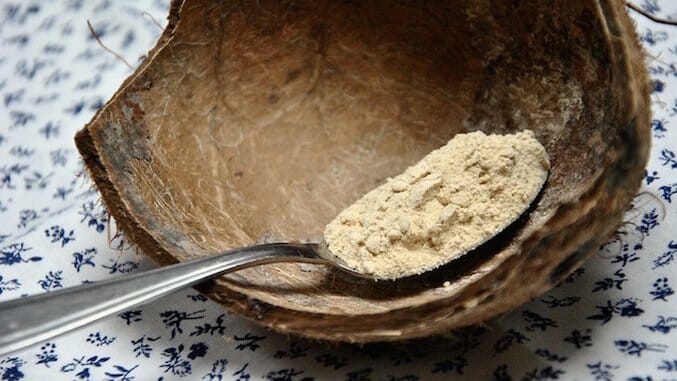What’s Up With That Food: Maca

Although the western world calls it a “superfood,” maca helps Peruvians withstand high altitudes and stay healthy. Maca definitely has a few things to teach us.
Type of food: Vegetable
Name: Lepidium meyenii
Origins: This tuber is similar to radishes and turnips in terms of its appearance and the way it grows. Maca grows high up in the Andes Mountains of Peru and is a staple in the Peruvian diet. Maca can be a yellowish cream-colored, red or black. It’s typically organically grown—there are not many.
Why/How Did We Start Eating it: Native Peruvians have been eating maca for centuries because it’s believed to impart strength and energy.
According to naturopath,herbalist and member of the advisory board for Gaia Herbs Mary Bove, N.D., maca is a “true functional food…It’s used to support endurance. Living in such a harsh area at altitudes of over 10,000 feet puts extreme strain on the body. Maca has long been used to help the body adapt.”
How it’s Used: The different colored macas are believed to possess slightly different compounds, but the creamy yellow roots are most widely grown and available. Natives also eat the leaves of maca in salad or feed them to animals, but it’s also traditional to boil the roots and mash them. “The young roots can be boiled and steamed, then blended into a sweet milky drink or porridge,” says Bove.
How it’s Purchased: Here in the United States, this product is most readily available in a dried powder. It’s often added to smoothies, where it imparts a slightly bitter taste, but it can simply be added to water, too. In Peru, that powder is added to baked goods, says Bove. And as you might expect, maca is everywhere in Peru. “When you walk into a supermarket in Peru, you’ll see cookies, oatmeal and cereal with or without maca. It’s used in everything,” she says.
Many holistic health companies sell maca as a functional food or in supplement form. Gaia sells a maca powder and in capsule form: You can take the single herb by itself, but maca also pops up as one of several ingredients in Gaia’s male and female libido formulas. If you aren’t inclined to add maca to a morning smoothie, you can take a capsule to obtain the health benefits. Either way you buy it from Gaia, it’s in a gelatinized formula—that means they’ve removed some of the inert starch, which makes maca easier to digest, says Bove.
This is really only the tip of the proverbial iceberg; once you start paying attention to a product, it seems to pop up everywhere. In marketing speak, maca is often labeled a “superfood,” so it’s also rolled into plenty of other items, such as the organic, gluten-free energy bars from Shanti. This Miami-based company pairs maca with cacao, chocolate and chia for its libido energy bar, and adds maca to sweet almonds and coconut in its fat burning formula. It’s also rolled into and smoothie mixes, such the Natural Citizen’s product Organic Energy, which aims to boost you with maca, quinoa, green tea and Rhodiola rosea.
Even considering the way an ingredient often becomes quickly incorporated into foods, Maca’s been appearing in some unexpected places. It’s also been known to show up in beer from Kuka Beer in New York State. Maca also is incorporated in JEM Raw Nut Butter—specifically in Cinnamon Red Maca, where it’s paired with almond butter and cinnamon. “There are nutritional synergies between these two powerhouse items that bring balance to each other and the entire products: Sweet almonds with a grounding base from the maca, says Jennifer Moore, CEO of JEM Raw Nut Butters. Their grounding energies, plus the healthy fats of almonds, work well together, she notes.
-

-

-

-

-

-

-

-

-

-

-

-

-

-

-

-

-

-

-

-

-

-

-

-

-

-

-

-

-

-

-

-

-

-

-

-

-

-

-

-








































